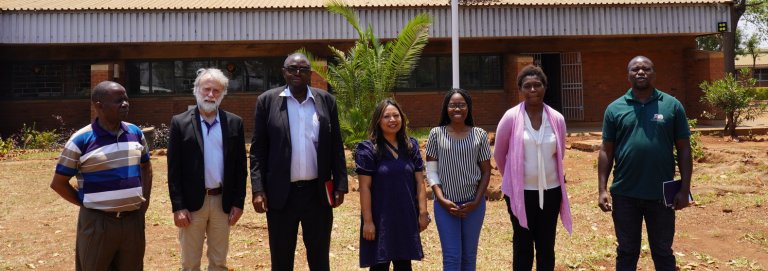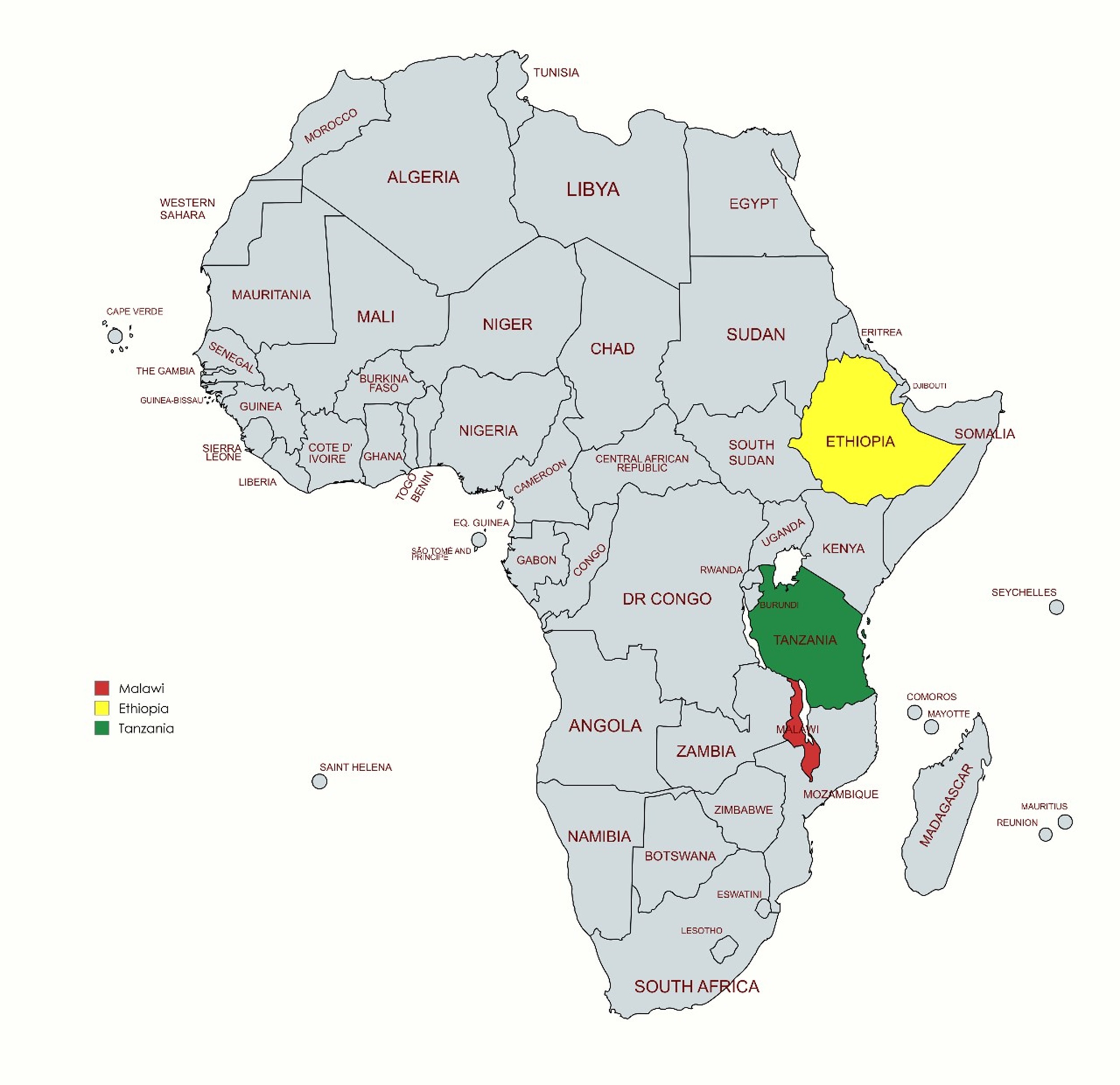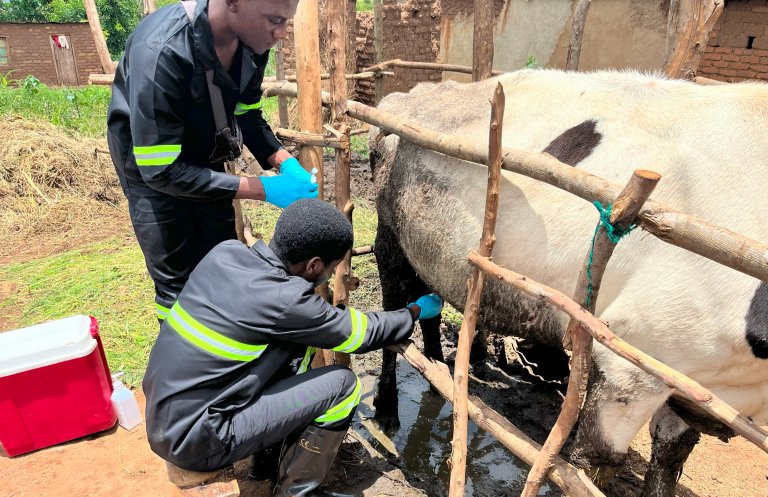- Click here for latest news related to OH-Milk project
Successful laboratory training boosts veterinary diagnostics in Malawi (28. October 2025)
Practical training on laboratory detection of zoonotic bacterial pathogens in milk (11. August 2025)
Successful workshop in One health project in Tanzania (19. March 2025)
The Norwegian Veterinary Institute contributes to safer milk in Ethiopia (10. February 2025)
The Norwegian Veterinary Institute contributes to safer milk in Malawi (16. October 2024)
News and events
.jpg)
Successful laboratory training boosts veterinary diagnostics in Malawi
%20%E2%80%93%20Kopi.jpg)
Practical training on laboratory detection of zoonotic bacterial pathogens in milk
.jpeg)
Successful workshop in One health project in Tanzania
Background
The project was established in collaboration with the Norwegian Agency for Development Cooperation (Norad), and operates in Ethiopia, Malawi, and Tanzania, empowering local stakeholders and fostering economic viability.
Livestock systems play a significant role in rural livelihoods and the economies of developing countries. The global cost of livestock disease is estimated in billions of dollars, and interventions to improve animal health will benefit both human health and food sustainability.
Firstly, by reducing zoonotic diseases, antimicrobial resistance and emerging diseases. Secondly, by improving the efficiency of livestock production, reducing the negative environmental impacts and contributing to economic gains at multiple levels. Zoonotic diseases occur at the animal – human interface. Functional health systems must include a bridge of collaboration at least between human- and veterinary authorities if they shall efficiently target zoonotic disease for the good of public health.
Download factsheet for the OH-Milk Project

Based on discussions and mapping exercises with partners in Ethiopia, Malawi and Tanzania, the Norwegian Veterinary Institute (NVI) proposed the initiation of four interlinked “areas for action” that together will help improve animal health and food safety, strengthen the veterinary services and operationalise One Health (OH).
- Implementer, Financial support and partners
Implementer:
The project is implemented by the Norwegian Veterinary Institute (NVI) under an agreement with Norwegian Agency for Development and Cooperation (Norad).
Financial support:This publication has been produced with the financial support from Norway.
Partners:Malawi: Trustees of Agricultural Promotion Program (TAPP), Central Veterinary
Laboratory of Malawi (CVL) and Public Health Institute of Malawi (PHIM).
Ethiopia: Armauer Hansen Research Institute (AHRI ), Animal Health Institute (AHI) and Addis Ababa University (AAU).
Tanzania: Tanzania Veterinary Laboratory Agency (TVLA), Sokoine University of Agriculture and Tanzania Dairy Board.Duration: 2022-2027
Location: Norway, Ethiopia, Malawi and Tanzania
- Map Ethiopia, Malawi and Tanzania

Project goal
The overall aim of this regional project is to use a One Health approach to contribute to sustainable production of safe milk for food security, improved nutrition, increased animal and human health by empowering local stakeholders and fostering economic viability.

OH-Milk four strategic outcomes (OUT)
- OUT 1 - Operational One Health Platforms for coordinated control of zoonoses and AMR in the milk value chain
Objective: To operationalize the OH platform for communication and collaboration necessary for sharing information and responsibilities to deal with zoonoses and infectious diseases affecting the milk value chain.
Expected outputs:
- Stakeholder map relevant for OH and collaborations for zoonotic diseases in the milk value chain, describing their role, function, collaborations, communication pathways and any shared inter sectoral responsibilities
- Country- and context specific prioritization of zoonotic disease and AMR challenges in the milk value chain
- Defined gaps in the OH system necessary to deal with zoonoses in the milk value chain and defined training needs.
- A country specific syllabus developed to fill the gaps, and purpose-made courses designed and the training is implemented.
- Purpose-made courses have been designed and the training for the selected stakeholders is implemented.
- Collaborative partnerships set up to provide a framework for handling zoonotic diseases in the milk value chain across sectors.
- OUT 2 – Capacity for surveillance of AMR, antimicrobial use and infectious diseases in the milk value chain
Objective: To establish procedures for collecting samples, reporting and analysing data and results for zoonotic diseases and other important pathogens from dairy animals and milk.
Expected outputs:
- A comprehensive stakeholder map with list of actors and contact persons in relevant government and non-government organisations (regional, national, local), private actors and users, with a description of their role and responsibilities in surveillance relevant to AMR and the milk chain.
- A detailed description of existing surveillance systems, including national strategies, plans, indicators, level of implementation, data sources, data ownership, how data are collected, analysed and presented.
- Qualitative and quantitative assessment of the surveillance system describing the strengths and weaknesses of the systems relevant to zoonoses in the milk value chain and AMR, across animal health/veterinary and public health sectors.
- Identified training needs of personnel, technical needs, and target areas for surveillance system improvement. A suggested syllabus has been developed.
- A roadmap for strengthening surveillance systems across veterinary and public health sectors that includes necessary courses (some available from FAO, and others to be developed).
- Field epidemiology-training program and other courses for animal health personnel /veterinarians, collaborating public health officials at central/national level and animal health personnel/veterinarians at district level are developed and implemented (piloted).
- After the first cycle of training, course evaluations have guided improvement/modification of the different training elements. Evaluation of progress and further closing of gaps has been achieved during roll out of pilot investigation (outcome 3)
- OUT 3 – Capacity to detect zoonotic diseases through laboratory investigations
Objective: To improve capacities for diagnostic investigations, for zoonotic diseases and AMR relevant to the milk value chain.
Expected Outputs:
- Stakeholder map of relevant central and regional laboratories and their functionalities, strengths and weaknesses.
- Report on the functionality of each countries’ veterinary laboratories that describes the laboratory strengths and weaknesses including sample flow at regional and central actors, methodological repertoire (infectious diseases and AMR), biosecurity, quality control, waste management, technical equipment, procurement of and availability of consumables and competence of personnel. Results from mapping are also relevant to OUT2 and OUT4.
- Report describing strengths and weaknesses of laboratories as well as their needs for training– and technical strengthening (roadmap for capacity building).
- Defined training needs, and syllabus as well as a roadmap for implementation of training that includes existing courses and purpose made new courses.
- Training is implemented (some courses for participants from both countries simultaneously).
- A relevant theme for a pilot study has been decided on, and is anchored in the lab assessment, risk analyses in OUT1 and literature review. It includes a plan for consumables and some basic equipment. The design of the pilot also considers the need for training and method establishment with respect to disease prevalence (e.g screening for Brucella spp., Coxiella burnetii, Rift Valey Fever, AMR, pathogens associated with mastitis).
- The pilot study has supported and strengthened methodological capacity in the laboratories and in the field and has generated valuable disease prevalence data that is reported.
- Laboratory method establishment and specific screening programmes (especially through the pilot) have provided a baseline on the disease situation in dairy animals in the target areas/countries that is has been used to prioritise laboratory training and advisory functions, and to define future focus areas.
- OUT 4 – Veterinary services surrounding primary producers of the milk value chain has been established
Objectives: To accelerate investment in the milk value chain by improving national disease control in dairy animals through empowering the veterinary services.
Expected Outputs:
- Relevant partners have been identified for collaborative partnership & target veterinary service chains have been selected; their status and needs have been mapped.
- The target veterinary service chain has been selected in each country and its strengths and weaknesses have been mapped.
- A combination of literature reviews, discussion groups, focus groups and on-line surveys have been used to develop a picture of the status and needs of a selected chain in each country. The pilot study of output area 3 has also been used for information
- A strategic plan for interventions to strengthen the services along the chain from farmer to central veterinary authorities has been made. This includes a description of geographical area to be targeted, training needs and a plan for using available and new course material.
- Training of animal health personnel has been commenced according to the plan of output. Parts of the training may be performed in both countries simultaneously.
- The effects of training have been assessed, and further training needs and support has been defined.





